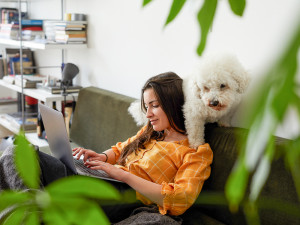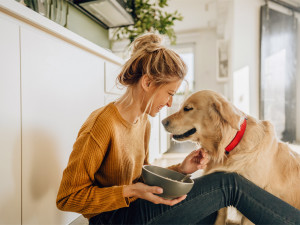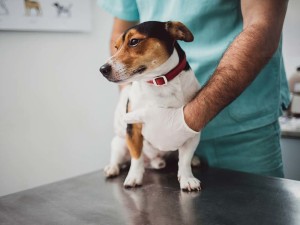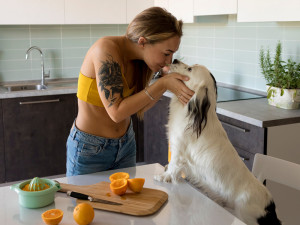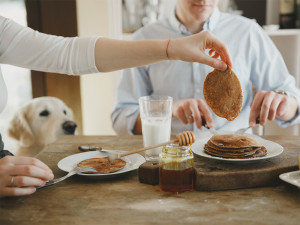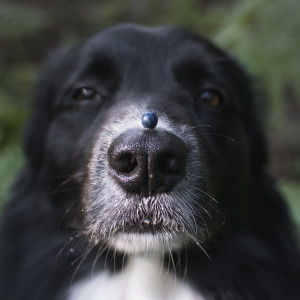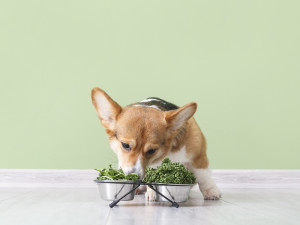What to Do When Your Dog Eats Something Toxic
So Fido has been in your chocolate stash... here’s what to do
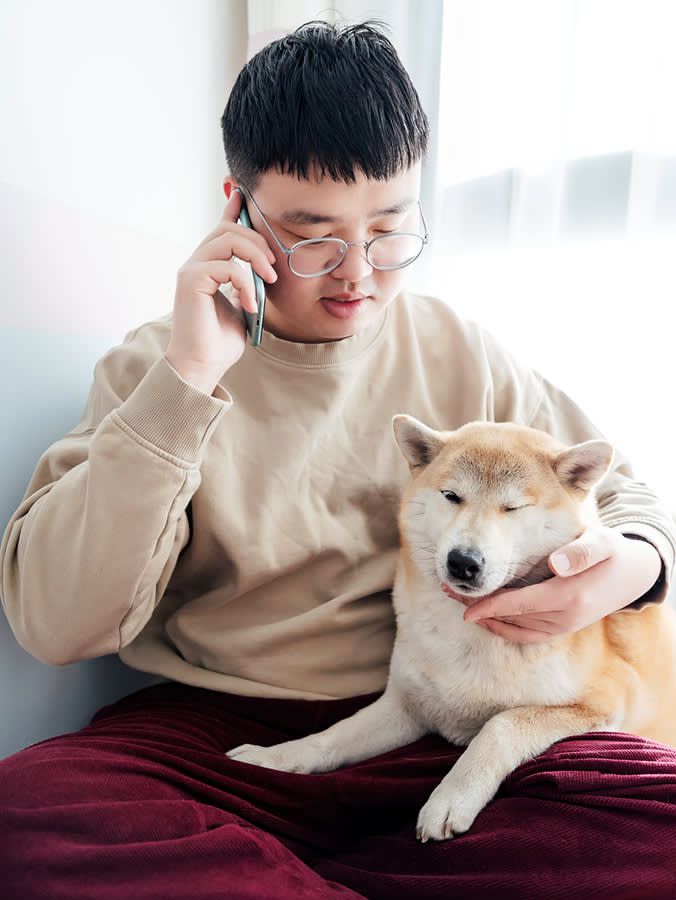
share article
When your furry companion gets a little too adventurous and eats something they shouldn’t,opens in a new tab it can be a frightening experience for any pet parent, let alone when they eat something toxic and potentially damaging to their health.
Nibbling on something they shouldn’t is almost a rite of passage for a pup, but recognising the warning signs, knowing the appropriate actions to take and seeking professional help are crucial steps to ensure your dog’s well-being. In this guide, we’ve gathered insights from veterinary experts to help you navigate the steps to take in this worrying (and potentially life-threatening) situation.
Know the warning signs
Recognising the warning signs that your dog has ingested something toxicopens in a new tab is crucial in ensuring a swift response. According to Carol Gray and Daisy Parr, principal lecturer and lecturer in veterinary nursing, respectively, at Hartpury University, common initial signs include hyper-salivation, vomiting, diarrhoeaopens in a new tab and lethargy, whereas “In more extreme cases, toxins can cause an uncoordinated and ‘wobbly’ gait (ataxia), seizures, jaundice (a yellow appearance in the skin, eyes and gums and a sign of liver disease) and anaphylaxis (an allergic reaction which can range from hives to difficulty breathing).”
Spotting these signs is especially challenging when you haven’t witnessed your pup chow down on something they shouldn’t. “Some signs sadly are much more subtle,” says Dr Nina Cooke, an emergency and critical care vet. “They will cause kidney damage and this is only evident after a few days, by which time it could be too late.”
The symptoms at that stage would be lethargy and loss of appetiteopens in a new tab, she adds. For example, “Rat poison will cause internal bleeding a few days after ingestion, so the animal tends to go lethargic and might have shallow breathing or bruising on the belly.” Promptly recognising these signs is crucial for initiating timely treatment.
Stop your dog from ingesting any more
Taking immediate action to prevent further ingestion is vital in managing a toxic incident. Along with contacting the vet promptly, Carol also emphasises the importance of keeping a sample of the toxin or information leaflet if applicable for the vet’s assessment.
Additionally, if the toxic substance is external, such as a poorly applied flea preparation, preventing further licking with a ‘buster collar’ or a body-shirt is crucial, says Carol. By acting swiftly and responsibly, pet parents can minimise the potential harm caused by the toxin and improve the chances of a positive outcome.
Work out what your dog has eaten, and how much
Understanding the quantity and type of toxic substance ingested is equally important. Whilst there isn’t a one-size-fits-all answer to how much is too much, the experts suggest that the toxic dose varies depending on factors such as the dog’s weight and the specific toxin. “There will also be some individual variation, too, for example, those who have pre-existing diseases may be more sensitive,” explain Carol and Daisy.
Whilst there are so many potentially toxic things for dogsopens in a new tab, and it depends on what’s been eaten and how much, some examples of poisonous household items and their levels of toxicity include:
Chocolate: the lethal dose of theobromineopens in a new tab (the toxic component) is reported to be 100–500 mg/kg of body weight in dogs. However, not all types of chocolate contain the same amount of theobromine: white chocolate typically contains less theobromine (0.1 mg/g), whereas cocoa powder and plain chocolate contain the highest concentrations (20 mg/g and 15 mg/g), in which case less than 100g of plain chocolate could be fatal for a 10kg dog.
Raisins and grapesopens in a new tab: little is known about the toxic dose for these, or the chemical that causes symptoms, tartaric acid (“it’s a bit like Russian roulette; some raisins contain the toxin, others don’t,” says Dr Cooke), so it is recommended to treat any ingestion.
Ibuprofen: 100–125 mg/kgopens in a new tab. “Typically the painkiller and anti-inflammatory comes in 200mg tablets, so a 5kg Chihuahua would need to only ingest two tablets for it to be of concern,” say Carol and Daisy. “A Labrador would need to ingest a whole strip, which is not uncommon as they often have a sweet coating.”
Batteries (eg, small watch batteries): any signs your dog has ingested any sort of battery needs immediate veterinary attention.
Rat poison: “In large amounts or chronic exposure [a dog that lives on a farm and hunts poisoned rodents] can be a big issue, but tiny amounts can be OK,” says Dr Cooke. However, she adds, she “wouldn’t risk it” and recommends seeking vet advice immediately.
Being aware of these nuances empowers pet parents to provide essential information to veterinarians, aiding in a more accurate diagnosis and treatment plan. “Where possible, it’s really helpful if you can provide your vet with the weight of your pet and the exact brand (bonus points for packaging) of the product ingested, as well as the amount that has gone (weigh what’s left and minus off the amount that should be there),” says Dr Cooke.
Speak to a vet ASAP
Working out what your pup has eaten is an important start, but contacting a veterinarian is a crucial step in dealing with a potentially toxic ingestion, as time is often of the essence. “Call the vet as soon as you know they’ve eaten something they shouldn’t,” advise Carol and Daisy. “If inducing emesis (vomitingopens in a new tab) is recommended, it normally needs to happen within the first hour of ingestion.”
However, Dr Cooke warns against first-aid at home, other than preventing further ingestion: “The home remedies to cause vomiting can actually cause more harm than good and there is no single action that can be recommended at home; it again depends on the toxin so we would always recommend calling the vet or the poison line [more info below] first so they can give specific advice.” So, despite what that scene in Anatomy of a Fall may have you believe, leave the saltwater out of it.
Have the Animal Poison Line to hand
In situations where immediate and tailored advice is essential, having the number of the Animal Poison Lineopens in a new tab – +44 (0) 1202 50 9000 – to hand can be invaluable. Dr Cooke underscores the significance of the service, run by the Veterinary Poisons Information Service (VPIS)opens in a new tab, explaining that the Animal Poison Line offers detailed information for each specific toxin, providing pet owners with precise instructions on what to do from a wide range of potential toxins, from adder bites to blue algae, chocolate to rat poison.
The Animal Poison Line does charge a small fee (£35–£45 per phone call, depending on the time and day), but the 24-hour service from qualified veterinary poison specialists “save seven out of 10 customers and their pets a trip to the vet”, and the tailored advice and expertise it offers make it a valuable resource, especially in cases where the toxicity is not straightforward.
Vets, too, rely on this service to obtain specific advice for atypical toxicities, so they really are the pinnacle when it comes to poison and toxicity advice in the veterinary community: “The Animal Poison Line has a whole bank of information for each specific toxin and will give tailored advice. If it’s not a typical toxicity, this is who we’d call as vets,” says Dr Cooke.
“The VPIS have a helpful websiteopens in a new tab with lots of resources for veterinary practices and are on hand to deal with any queries vets have,” add Carol and Daisy. “They’re trusted specialists in the field, so can also recommend treatment plans for certain poisons.”
The VPIS and Animal Poison Line websitesopens in a new tab offers a checklist of things to note before calling, and tell you in which circumstances you should go straight to an emergency vet. And if you’re not sure if something is poisonous, (for example, if your dog has eaten a crayon), you can call the Animal Poison Line before your vet, for peace of mind.
Remember, your dog’s safety is the top priority. By staying informed and acting promptly, you can ensure your beloved pet gets the care they need in case of a toxic ingestion.

Orla Pentelow
Orla Pentelow is a freelance journalist and copywriter based in London. When not at her desk she’s out and about with her rescue dog, Luna, who works primarily as chief distractor.
Related articles
- opens in a new tab
Can Dogs Eat Honey?
They shouldn’t exactly have their paw in the honey jar constantly, but the sweet stuff can be beneficial in some cases
![A close up view of a dog with a blueberry resting on its nose]() opens in a new tab
opens in a new tabCan Dogs Eat Blueberries?
Yes – blueberries are a fibre- and antioxidant-packed snack for your pup
- opens in a new tab
Can Dogs Eat Cucumbers?
That cucumber crunch is irresistible. Learn if your dog can get in on that action
- opens in a new tab
Can Dogs Eat Kale?
Yes, this superfood is good for your dog in small amounts
